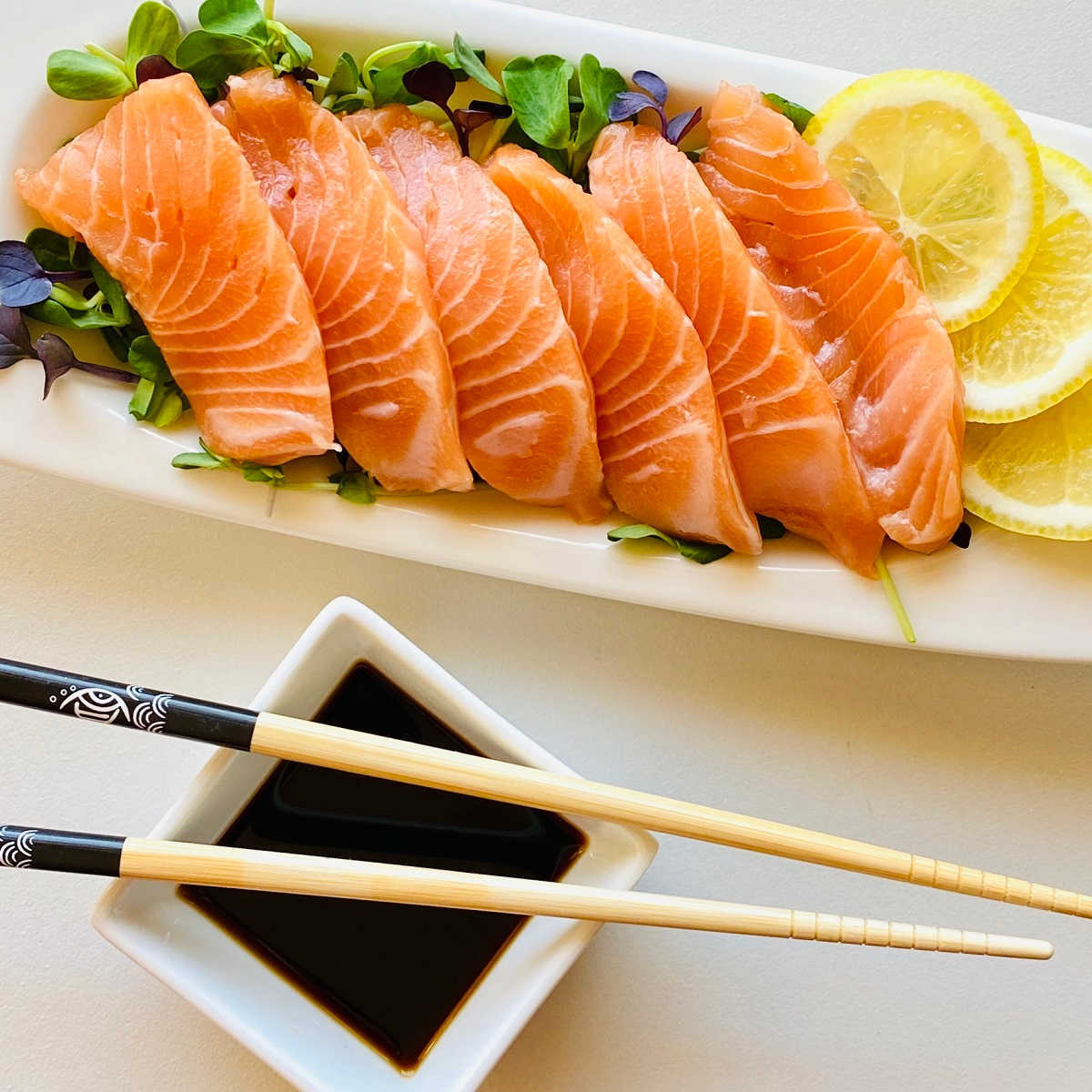
Ever wondered how many calories are lurking in your favorite slice of sashimi? You're not alone! Sashimi, a beloved delicacy known for its simplicity and elegance, often leaves health-conscious foodies pondering its nutritional content. Sashimi calories might seem like a mystery wrapped in a riddle, but fear not! We're here to slice through the confusion and lay it all out on the table. From the lean, mean protein punch packed by a slice of tuna to the surprisingly low-cal delight of salmon, understanding what's on your plate can transform your dining experience. So, grab your chopsticks, and let's dive into the world of sashimi calories. You might just be surprised at what you find!
Key Takeaways:
- Sashimi is a low-calorie, high-protein dish with health benefits like omega-3 fatty acids and essential vitamins, making it a delicious and nutritious choice for weight management and overall well-being.
- Enjoy the artistry and cultural significance of sashimi while savoring its various flavors and low-calorie content, making it a versatile and healthy option for any meal.
Understanding Sashimi and Its Popularity
Sashimi, a traditional Japanese delicacy, consists of thinly sliced raw fish or seafood. Unlike sushi, which includes vinegared rice, sashimi focuses purely on the taste and texture of the fish itself. Its popularity spans globally, with many appreciating its simplicity and the skill required to prepare it.
Sashimi Calories: A Closer Look
When considering a diet or simply curious about what you're eating, knowing about the calorie content in sashimi can be quite enlightening. Generally, sashimi is considered a low-calorie option, especially when compared to other appetizers or main courses. This is because it's mainly protein, with very little fat or carbohydrates.
-
Tuna Sashimi: A slice of tuna sashimi (about 1 oz) contains roughly 30 calories. Tuna is known for its lean protein, making it a favorite among health-conscious individuals.
-
Salmon Sashimi: Similar in size, salmon sashimi has about 52 calories. Salmon is slightly higher in calories due to its omega-3 fatty acids, which are good fats beneficial to your health.
-
Yellowtail Sashimi: This variety has approximately 41 calories per slice. Yellowtail offers a good balance between flavor and calorie content, making it a popular choice.
Health Benefits of Sashimi
Sashimi isn't just low in calories; it's also packed with nutrients. These include omega-3 fatty acids, vitamins, and minerals, all essential for a healthy body.
-
Omega-3 Fatty Acids: Found abundantly in fish like salmon, these fats support heart health, reduce inflammation, and may lower the risk of chronic diseases.
-
Protein: Essential for muscle repair and growth, the high protein content in sashimi makes it an excellent choice for those looking to maintain or build muscle mass.
-
Vitamins and Minerals: Sashimi is a good source of Vitamin D, B12, and selenium, among others, contributing to improved immunity and overall well-being.
Considerations for Eating Sashimi
While sashimi offers numerous health benefits, there are considerations to keep in mind, especially concerning freshness and quality.
-
Freshness: Always consume sashimi from reputable sources to avoid the risk of foodborne illnesses. Freshness is paramount for both safety and taste.
-
Mercury Content: Some fish, like tuna, can contain higher levels of mercury. It's wise to consume these in moderation, especially for pregnant women and young children.
Sashimi: A Versatile Dish
Sashimi can be enjoyed in various ways, making it a versatile option for any meal.
-
With Soy Sauce: Dipping sashimi in soy sauce is traditional, adding a savory umami flavor that complements the fish.
-
Wasabi and Ginger: These accompaniments not only add flavor but also have health benefits, including anti-inflammatory properties.
Sashimi for Weight Management
Given its low calorie and high protein content, sashimi is an excellent choice for those managing their weight.
-
Low Calorie: Opting for sashimi can help reduce overall calorie intake while still providing a satisfying meal.
-
High Satiety: The protein in sashimi helps you feel full longer, reducing the likelihood of overeating.
Sashimi in Culinary Culture
Sashimi holds a special place in culinary culture, celebrated for its artistry and the skill required to prepare it.
-
Art of Preparation: The preparation of sashimi is considered an art, requiring years of training to master the precise cuts.
-
Cultural Significance: In Japan, sashimi is more than just food; it's a part of the country's rich cultural heritage.
Sashimi Varieties and Their Caloric Content
There are many types of sashimi, each with its unique flavor profile and caloric content.
-
Octopus Sashimi: Known as "Tako," octopus sashimi is relatively low in calories, with about 30 calories per slice.
-
Scallop Sashimi: "Hotate" sashimi provides roughly 26 calories per piece, offering a sweet and tender taste.
-
Sea Urchin Sashimi: This delicacy, "Uni," is higher in calories, with about 70 calories per ounce, due to its rich, creamy texture.
Sashimi: A Healthy Choice
Considering its nutritional profile, sashimi is undeniably a healthy choice for anyone looking to enjoy delicious food without compromising their diet.
-
Low in Saturated Fat: Most fish used in sashimi are low in unhealthy saturated fats, promoting better heart health.
-
Rich in Nutrients: Beyond calories, sashimi provides a wealth of nutrients that support various bodily functions.
-
Versatile and Delicious: With so many types of sashimi available, it's easy to find options that satisfy both your taste buds and dietary needs.
Savoring Every Bite: A Lean Look at Sashimi
Sashimi, with its rich flavors and minimalistic beauty, isn't just a treat for the taste buds but also a friend to your fitness goals. Each slice, whether it's salmon, tuna, or mackerel, brings its own set of nutritional benefits without the heavy calorie load often found in other dishes. Remember, though, while sashimi can be a low-calorie option, the real story is in the balance. Pairing these delicate slices with a variety of sides can either make or break your calorie count for the day. So, next time you're eyeing that sashimi platter, think lean but also think big picture. It's all about enjoying those flavors to the fullest, while keeping your health and wellness goals in check. Sashimi's not just food; it's a lifestyle choice that says yes to indulgence, minus the guilt.
Frequently Asked Questions
Was this page helpful?
Our commitment to delivering trustworthy and engaging content is at the heart of what we do. Each fact on our site is contributed by real users like you, bringing a wealth of diverse insights and information. To ensure the highest standards of accuracy and reliability, our dedicated editors meticulously review each submission. This process guarantees that the facts we share are not only fascinating but also credible. Trust in our commitment to quality and authenticity as you explore and learn with us.


